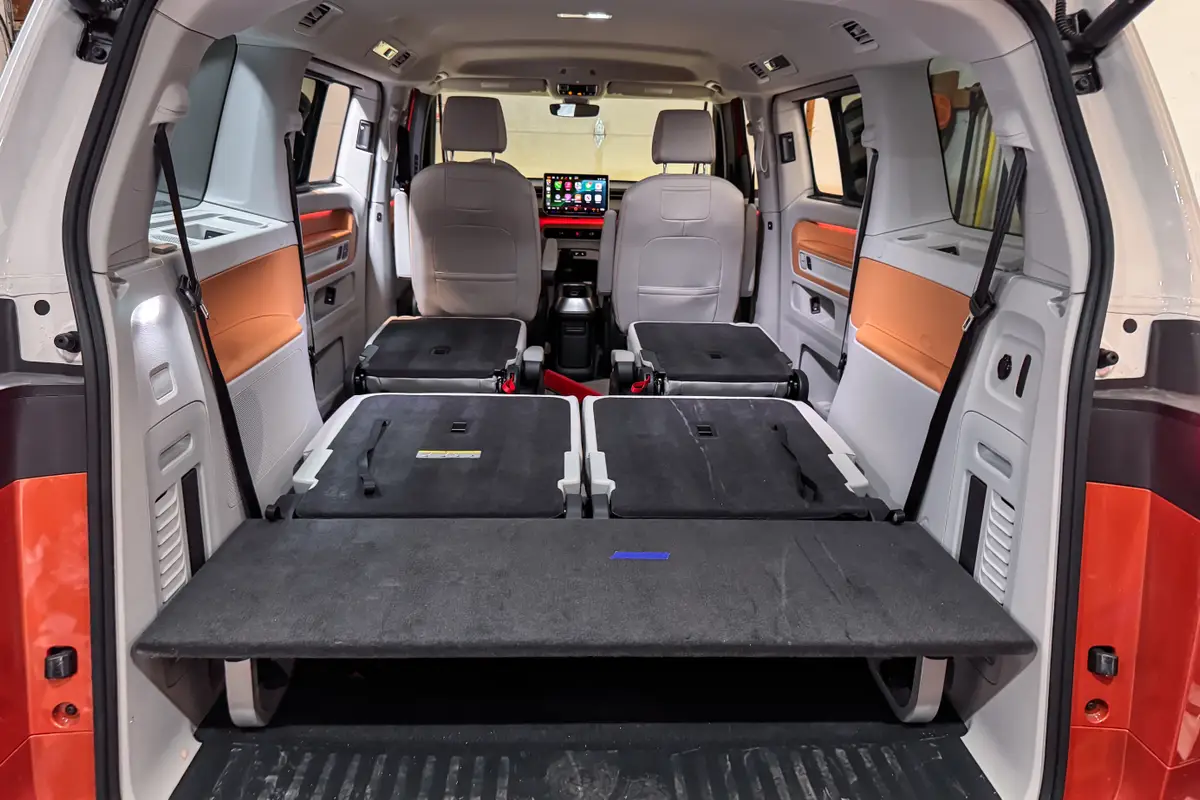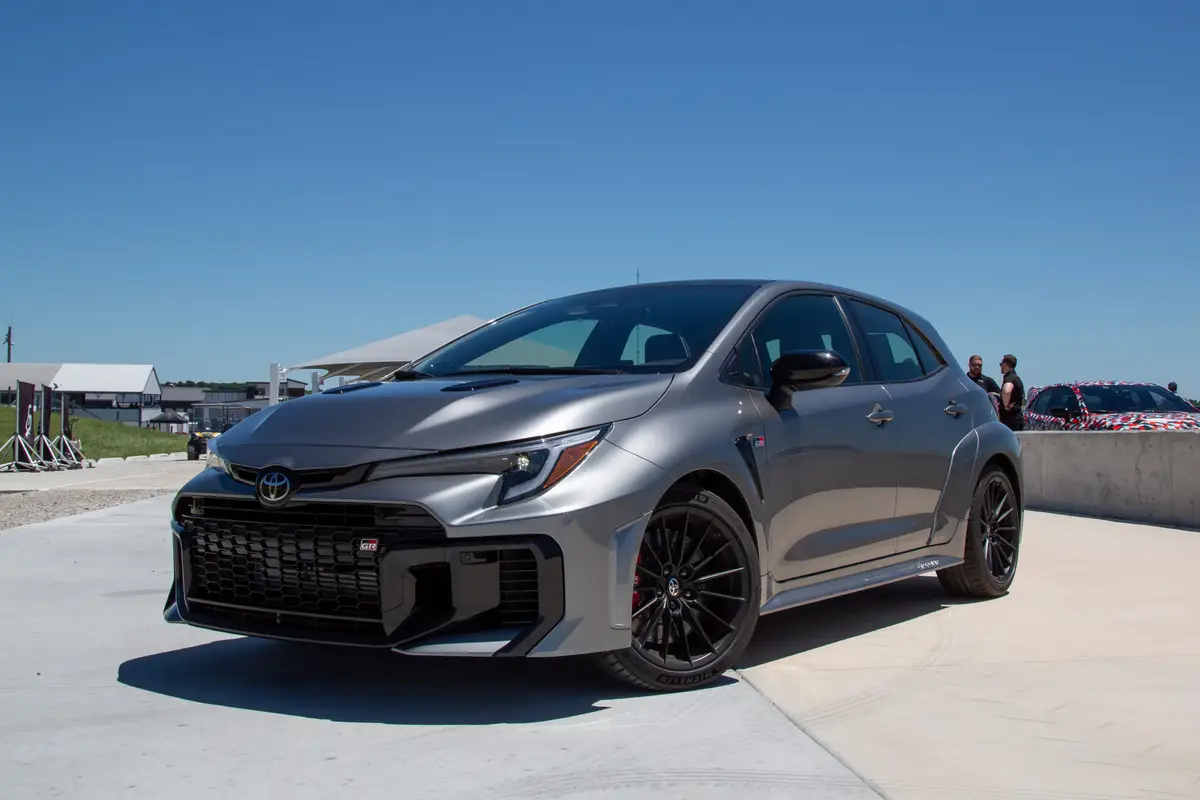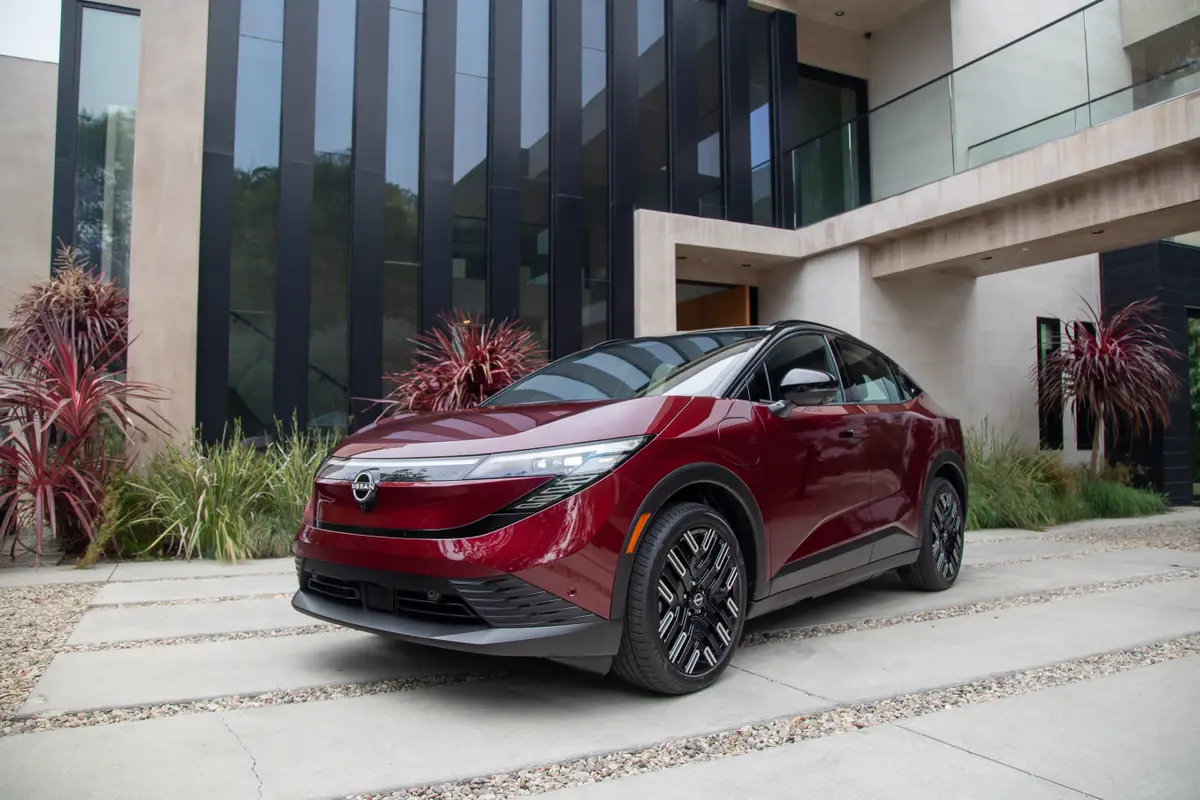2017 Chevrolet Bolt EV Review: Quick Spin


CARS.COM — The Chevrolet Bolt EV, GM’s first mass-market battery-electric car, gets an EPA-estimated 238 miles of range. It starts a tick under $30,000 after federal tax credits. It goes on sale by the end of this year. And it isn’t a drag to drive.
Related: 2017 Chevrolet Bolt EV: First Impressions
It might, in fact, hold its own in a drag race. We drove the Bolt EV this month in the Chicago suburbs and separately in rural Michigan, and it’s a hoot. The battery pack’s 60-kilowatt-hour capacity matches the base Tesla Model S. It powers a 150-kilowatt electric motor that’s good for 200 horsepower and 266 pounds-feet of torque — enough, Chevrolet says, to hit 60 mph in just under 7 seconds.
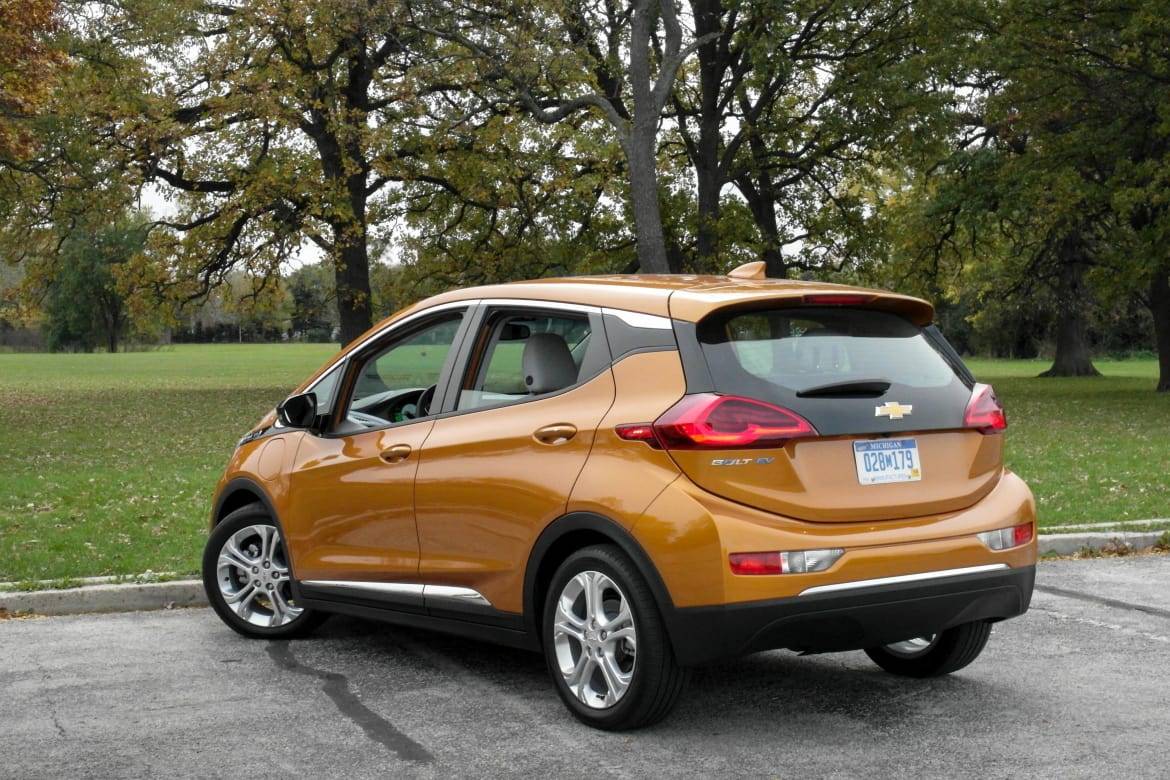
Bolting Away
As you’d expect if you’ve ever driven an electric car, all that torque comes at the get-go. But the distinguishing factor is just how much: Plant your right foot from a stoplight and the Bolt EV surges up to speed with a degree of urgency beyond the Nissan Leaf or Chevrolet’s own range-extended Volt. This is no Tesla Model S, but even with three adults on board, we managed easy spurts up to 30 or 40 mph, a sensation that evokes GM’s short-lived Chevrolet Spark EV.
Though dimensionally similar to other subcompacts, the Bolt EV is nearly 18 inches longer than the tiny Spark EV, and the effect makes for less of a runabout and more of a real car. Cabin materials are expectedly spartan, but the dashboard has some interesting three-dimensional layers and checkered eggshell trim. With the underfloor battery packed between the axles and no center tunnel necessary for a drive shaft or exhaust system, utility abounds. The dashboard drops to a minivan-like trough ahead of the center console with space to leave a purse or grocery bag. The console storage compartment is deep enough for an iPad. There’s no center floor hump in back.
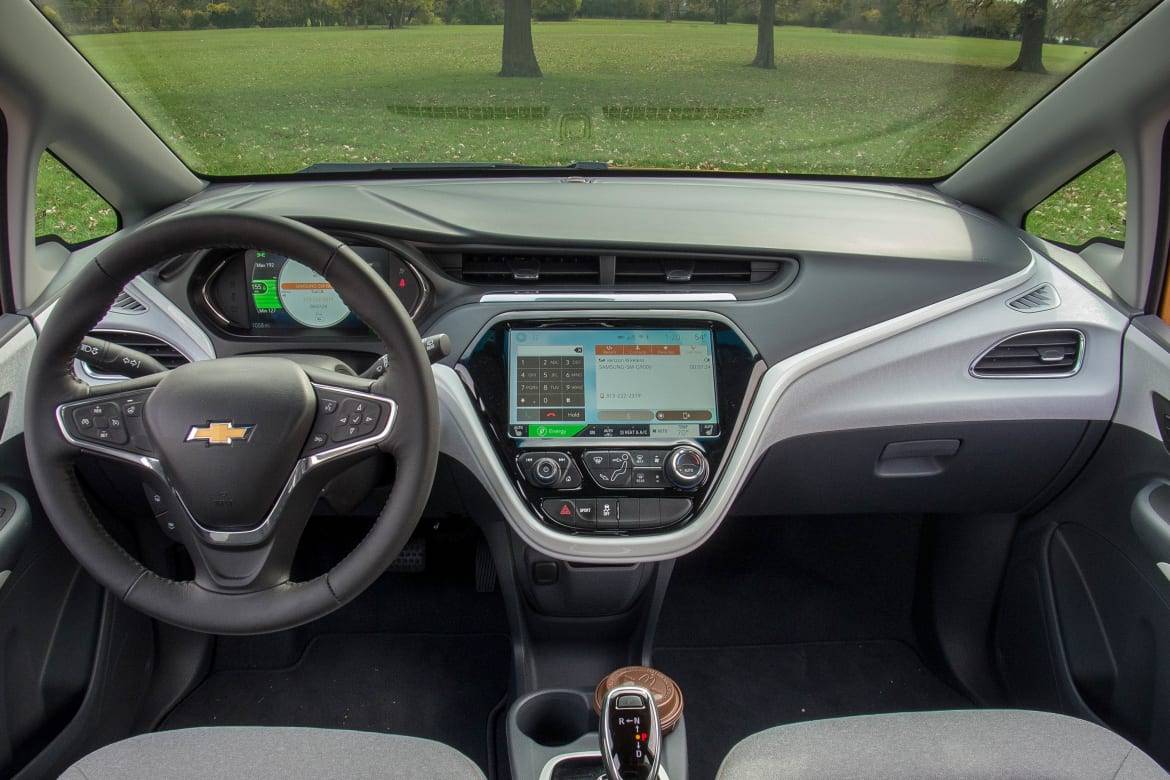
Still, front-seat comfort could improve. The seats employ their own suspension to enable thinner cushions, but they’re still just plain thin. Adult passengers shouldn’t mind the backseat: The low door opening means you have to duck to get in, but the high seat cushions afford good thigh support without nixing headroom, thanks to the tall roofline.
Steering and handling are both secure, and ride quality was acceptable during our quick drive, though we noticed a bit more chop in the backseat.
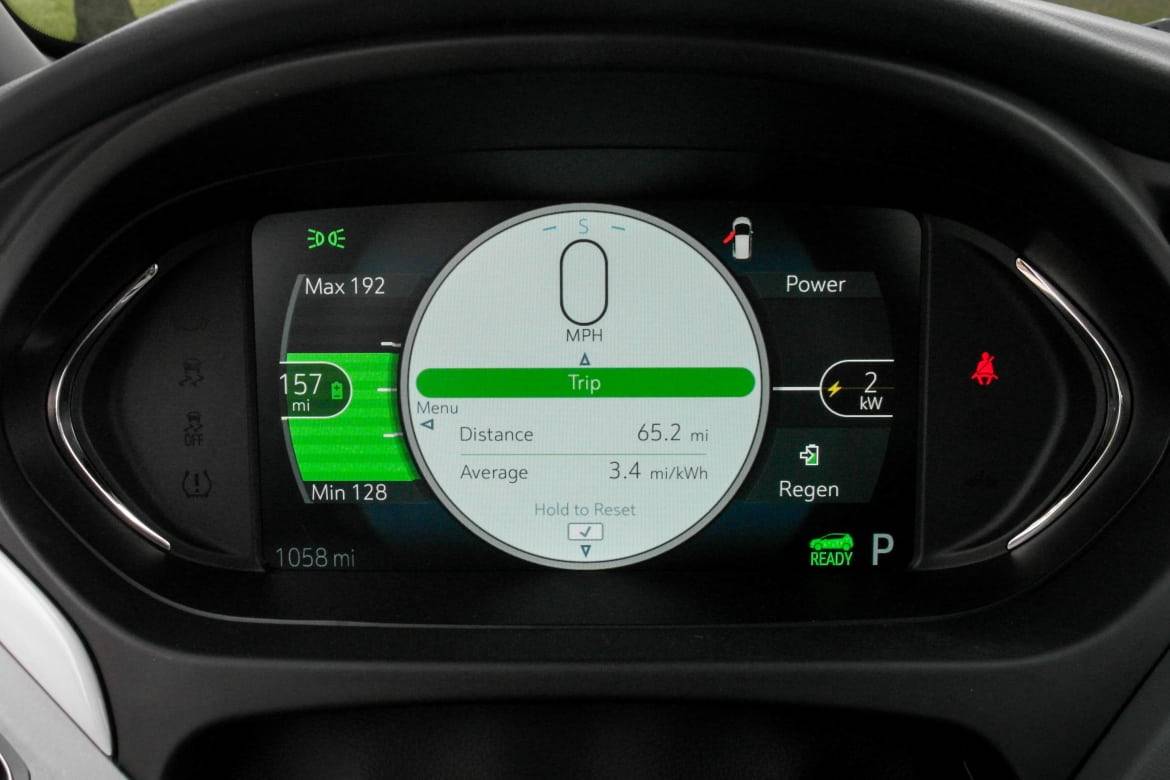
Nuts & Bolts
Push the car hard and its expected range falls; an indicator alongside the digital speedometer shows the expected range at its center, with maximum and minimum estimates above and below it based on recent driving history. There’s a considerable difference among these figures, which goes to show just how much driving style and accessory usage can affect things. The Bolt EV’s charging port accepts 240-volt Level 2 charging to hit full range overnight, or the supplied 120-volt Level 1 cord, but prospective buyers should consider Level 2 the bare minimum. Level 1 typically adds only 5 miles of range for every hour of charging. An extra $750 gets you the capacity to use a public Level 3 DC quick charger. We stopped at one alongside an Illinois interstate during our test drive and plugged in with about 155 miles of range remaining. Thirty minutes and a $10 session later, we had slightly more than 200 miles, but GM notes that the rate of charge depends on battery depletion. Plug in a near-empty battery and you’ll add miles fast; plug in a battery that’s already 80 percent full and you’ll charge slower. (Smartphones reportedly work this way, too.)
Unlike the Spark EV, which is on sale in just three states, the Bolt EV will hit specially certified Chevrolet dealerships in all 50 states next year. GM says roughly two-thirds of Chevrolet dealers are certified to sell the Volt, and although the Bolt EV’s certification process is separate, the automaker expects many Volt dealers to eventually sell it. Sales begin before the end of 2016 starting with dealers in California and Oregon, two of the 10 states that require a certain portion of new-car sales to be zero-emission vehicles (like electric cars).
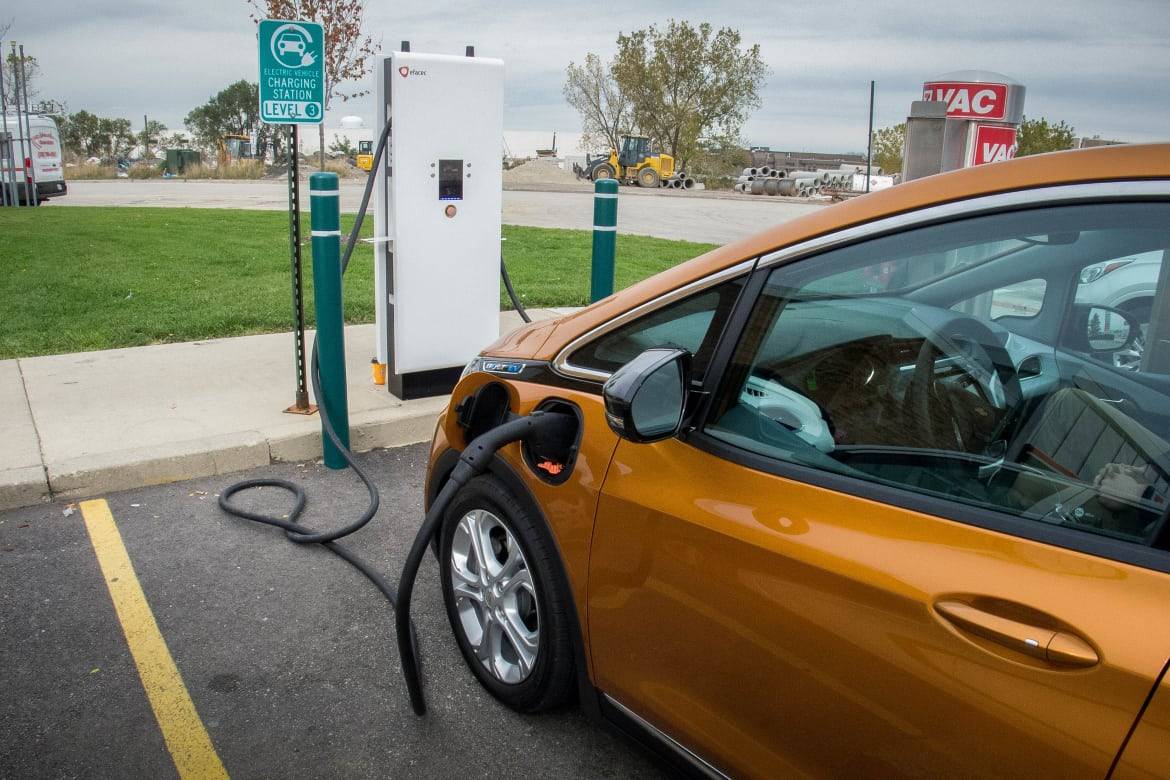
The Takeaway
Gas prices have bottomed out, but they’re still historically cheap, and consumer interest in eco-friendly cars like the Chevrolet Volt, Ford C-Max, Nissan Leaf, Toyota Prius and Volkswagen e-Golf has all but collapsed. Combined year-over-year sales for those five nameplates have declined for 11 consecutive months. For electric cars to become relevant in the era of affordable gas, consumers need a mass-market choice that can combat range anxiety. Consumer acceptance hinges on it: A 2015 survey by the National Renewable Energy Laboratory found just 27 percent of Americans would consider an electric car if it traveled 100 miles on a single charge. At 200 miles, consideration rose to 41 percent; at 300 miles, it was 56 percent.
The Bolt EV hits a sweet spot. Its numbers alone suggest considerable appeal even with current fuel prices, and GM did it well ahead of the forthcoming Tesla Model 3. The only question is whether the Bolt EV requires huge compromises to get there. At first blush, it doesn’t seem like it. GM’s latest — and most significant — plug-in car yet passes muster, and then some.

Former Assistant Managing Editor-News Kelsey Mays likes quality, reliability, safety and practicality. But he also likes a fair price.
Featured stories
